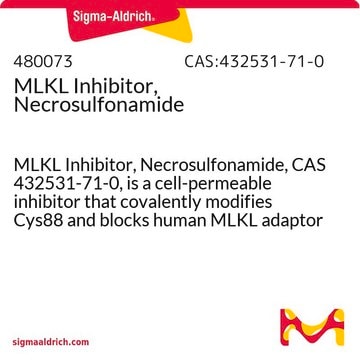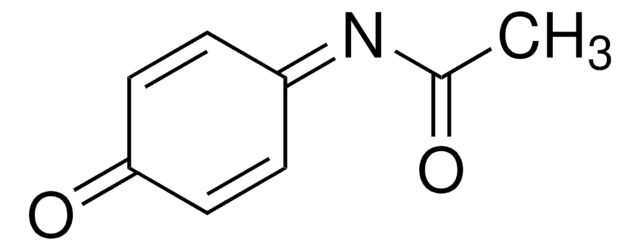SML2746
SRS11-92
≥98% (HPLC)
Synonym(s):
4-(Cyclohexylamino)-3-[(phenylmethyl)amino]-benzoic acid ethyl ester, Ethyl 3-(benzylamino)-4-(cyclohexylamino)benzoate
Sign Into View Organizational & Contract Pricing
All Photos(1)
About This Item
Empirical Formula (Hill Notation):
C22H28N2O2
CAS Number:
Molecular Weight:
352.47
UNSPSC Code:
12352200
NACRES:
NA.77
Recommended Products
Quality Level
Assay
≥98% (HPLC)
form
powder
color
white to yellow-brown
solubility
DMSO: 2 mg/mL, clear
storage temp.
2-8°C
SMILES string
N(C3CCCCC3)c1c(cc(cc1)C(=O)OCC)NCc2ccccc2
InChI key
VHQAJFNLPQULSV-UHFFFAOYSA-N
Biochem/physiol Actions
SRS11-92 is a cell penetrant and potent inhibitor of ferroptosis that attenuates the cell death associated with frataxin knockdown in healthy human fibroblasts. SRS11-92 protects against cell death in in a brain slice model of Huntington′s disease, an oligodendrocyte model of periventricular leukomalacia, and in isolated kidney proximal tubules model of kidney disfunction.
cell penetrant and potent inhibitor of ferroptosis that attenuates the cell death associated with frataxin knockdown in healthy human fibroblasts
Storage Class Code
11 - Combustible Solids
WGK
WGK 3
Choose from one of the most recent versions:
Certificates of Analysis (COA)
Lot/Batch Number
Don't see the Right Version?
If you require a particular version, you can look up a specific certificate by the Lot or Batch number.
Already Own This Product?
Find documentation for the products that you have recently purchased in the Document Library.
Rachid Skouta et al.
Journal of the American Chemical Society, 136(12), 4551-4556 (2014-03-07)
Ferrostatin-1 (Fer-1) inhibits ferroptosis, a form of regulated, oxidative, nonapoptotic cell death. We found that Fer-1 inhibited cell death in cellular models of Huntington's disease (HD), periventricular leukomalacia (PVL), and kidney dysfunction; Fer-1 inhibited lipid peroxidation, but not mitochondrial reactive
Sam Hofmans et al.
Journal of medicinal chemistry, 59(5), 2041-2053 (2015-12-24)
Ferroptosis is a nonapoptotic, iron-catalyzed form of regulated necrosis that is critically dependent on glutathione peroxidase 4 (GPX4). It has been shown to contribute to liver and kidney ischemia reperfusion injury in mice. A chemical inhibitor discovered by high-throughput screening
M Grazia Cotticelli et al.
The Journal of pharmacology and experimental therapeutics, 369(1), 47-54 (2019-01-13)
Friedreich ataxia (FRDA) is a progressive neuro- and cardio-degenerative disorder characterized by ataxia, sensory loss, and hypertrophic cardiomyopathy. In most cases, the disorder is caused by GAA repeat expansions in the first introns of both alleles of the FXN gene
Our team of scientists has experience in all areas of research including Life Science, Material Science, Chemical Synthesis, Chromatography, Analytical and many others.
Contact Technical Service







